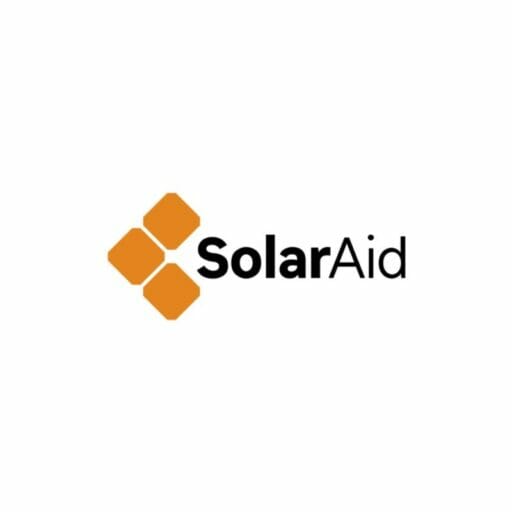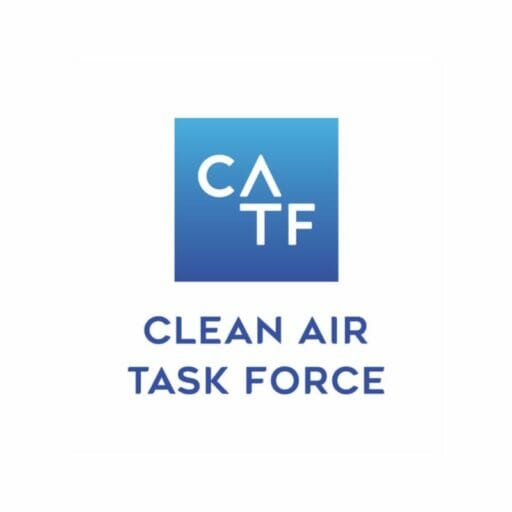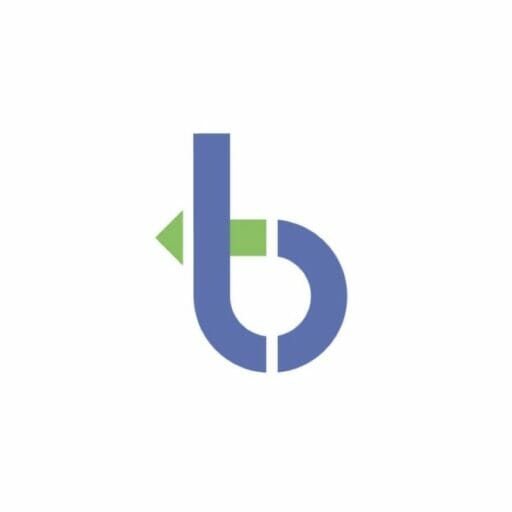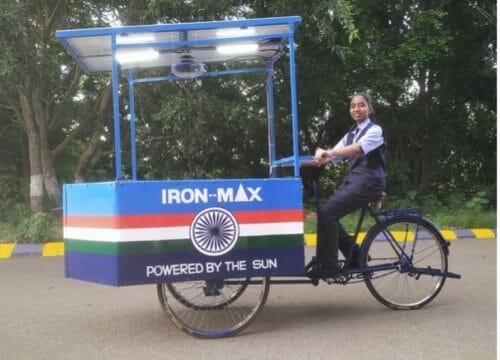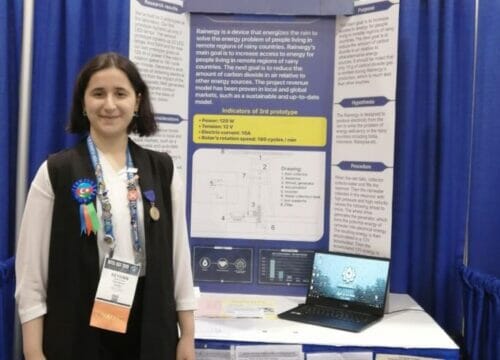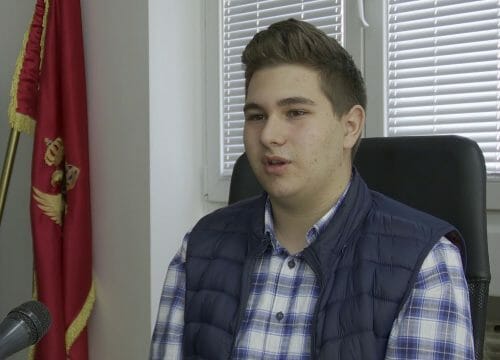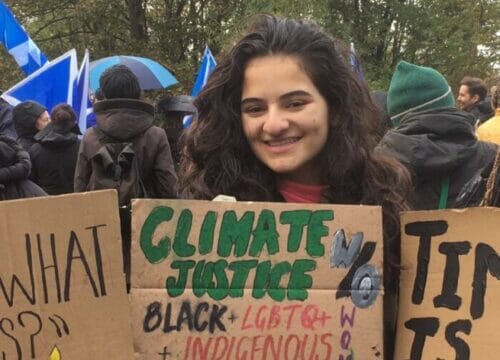Greenpeace is a movement of people who are passionate about defending nature. Our vision is a greener, healthier and more peaceful planet, that can sustain life for future generations.
Affordable and Clean Energy
Using energy that does not harm people or the environment

1. THE PROBLEM
What would you do without energy?
You wouldn’t be able to turn the lights on, cook your food, keep your house warm, drive to school and the list goes on.
The problem with our energy is that at the moment most of it is made by burning fossil fuels, which releases greenhouse gases into the atmosphere.
What is more? Energy costs money so not everyone can afford it. Some countries’ governments don’t have the money to pay for the infrastructure such as power lines to bring energy to everybody’s homes. While in other countries individual people don’t have enough money to pay to use energy.

2. The Solution
So what can we do to help?
We need to switch to using renewable energy types (like wind and solar energy), share research and knowledge between countries to widen access to energy and improve energy efficiency so that we aren’t using more energy than we need.

3. Take Action
There are lots of ways that anyone, including you, can make a difference to make energy cleaner and more affordable. For example, you could: be conscious of your own energy consumption and lead by example by turning off appliances when not in use or organise a school power out to raise awareness about affordable and clean energy.
Everyone can take action to make real change. What will you do?



4. CHARITIES
There are lots of charities that need your help to make energy affordable and clean.
For example, Solar Aid distribute solar lights to people who don’t have access to electricity, Renewable World set up renewable energy solutions and Clean Air Task Force invest in technologies and put forward policies to help us become a zero-emissions planet.
See how you can support them in their amazing work.
Imagine you woke up one morning and there was no electricity in the house? You might light a candle or two and get dressed for school. As you sit down for breakfast you realise there’s no hot porridge or bacon and eggs – cereal is the only way to go. You put the milk back into the fridge, which doesn’t have a light on and feels less cold than usual. You’re late for school because all the traffic lights are out on the way there and the traffic jams are hectic.
When you get back from school, the electricity is still gone. You can’t charge your phone, which is now flat. When you open the hot water tap, the water comes out ice-cold. You might sit down to do a project and realise that there’s no WI-FI and that your laptop’s battery isn’t going to last long. That evening, you end up doing your homework by candlelight and supper ends up being bread with cold baked beans. Everything outside feels eerily quiet, pitch dark and deserted – even the streetlights are off.
What would it feel like if this didn’t just happen for one day, but it was an ongoing situation? What if the city council let you know that there would be no more electricity? You would need to cook over a fire or a gas stove and if you wanted a hot bath you would need to boil water for it in a pot. The other option is that you would need to buy a solar power system or diesel-powered generator to make your own electricity at home but these are expensive systems.
This scenario is a bit laughable because obviously, the city council wouldn’t just stop supplying electricity. But many countries do not have a steady supply of electricity and there are millions of people that live without any electricity connection to their houses. They and their government simply can’t afford it.
Everyone needs energy! Our daily lives depend on it.
People use energy for: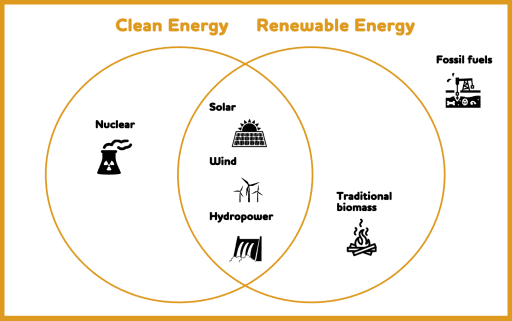
- heating
- cooking
- lighting
- electronic devices
- travelling
- keeping factories running
- doing business.
Not all energy is clean. Energy that comes from fossil fuels puts greenhouse gases into the air. This causes global warming.
Fortunately, it is possible to use energy sources that emit no or very low levels of greenhouse gases. These are known as ‘clean energy’.
You should also keep in mind that some energy sources can only be used once and then they are gone forever (non-renewable sources). Others can be replenished (renewable sources). Using renewable sources will ensure that we never run out of energy, making it accessible to our children and grandchildren too!
In a perfect world, everybody would have access to energy and it would be clean, renewable and affordable. That way, everyone can do amazing things without harming the environment.
The problem
73%
OF GREENHOUSE GAS EMISSIONS COME FROM ENERGY PRODUCTION/USE
80%
OF THE WORLD’S ENERGY IS SUPPLIED BY FOSSIL FUELS
13%
OF PEOPLE IN THE WORLD DON’T HAVE ELECTRICITY
1. Where energy comes from
There are lots of different energy sources and people around the world use different ones depending on what they have access to. Read on to learn more about each type of energy, where it comes from and what its pros and cons are.
Fossil fuels
We need to start using clean, renewable energy but isn’t it strange that with all the different ways we have available to create energy, we are relying most heavily on the worst kind? These are the fossil fuel triplets: coal, oil and gas. They are the main energy source in our world – supplying 80% of the world’s energy.
Thousands of years ago, dead plants and animals were buried in the earth’s crust. Instead of decomposing fully, they turned into coal, oil and gas.
Fossil fuels are ‘dirty’ energy because they release ancient carbon that should have been left buried in the earth, back out into the air in the form of carbon dioxide. They also can’t be renewed, so once they’re used up, they’re gone for good.
Fossil fuels are burnt to produce energy.
Take a look at the table on the right to see some pros and cons of fossil fuels.
SOLAR, WIND, HYDROPOWER
Nature is full of marvellous systems that can provide a natural source of energy if only we can harness that in the right way. This includes the energy of the sun, the wind and water. These supply just under 10% of the world’s energy, but that is changing rapidly.
Solar energy is made from sunlight shining on solar panels.
Wind energy is made when the wind blows turbine blades.
Hydropower energy is made when water moves.
Take a look at the table on the right to see some pros and cons of solar, wind and hydropower.
NUCLEAR
One of the cleanest and most reliable ways to provide energy is by making use of nuclear energy. Nuclear power can make energy without releasing greenhouse gases. It supplies about 4% of the world’s energy.
Nuclear power works with a chemical called uranium.
Take a look at the table on the right to see some pros and cons of nuclear power.
TRADITIONAL BIOMASS
Biomass is anything that is alive or anything that is produced by something that is alive. Bacteria, algae, trees, animals and their poo – everything alive, is biomass. More than 2.5 billion people in developing countries rely on it for cooking and it supplies about 6% of the world’s energy.
Traditional biomass can be burned to generate energy. You’ve probably used traditional biomass in the form of wood to make a fire. Charcoal and animal waste (poo) also often get used in energy production.
Take a look at the table on the right to see some pros and cons of traditional biomass.
Energy Use
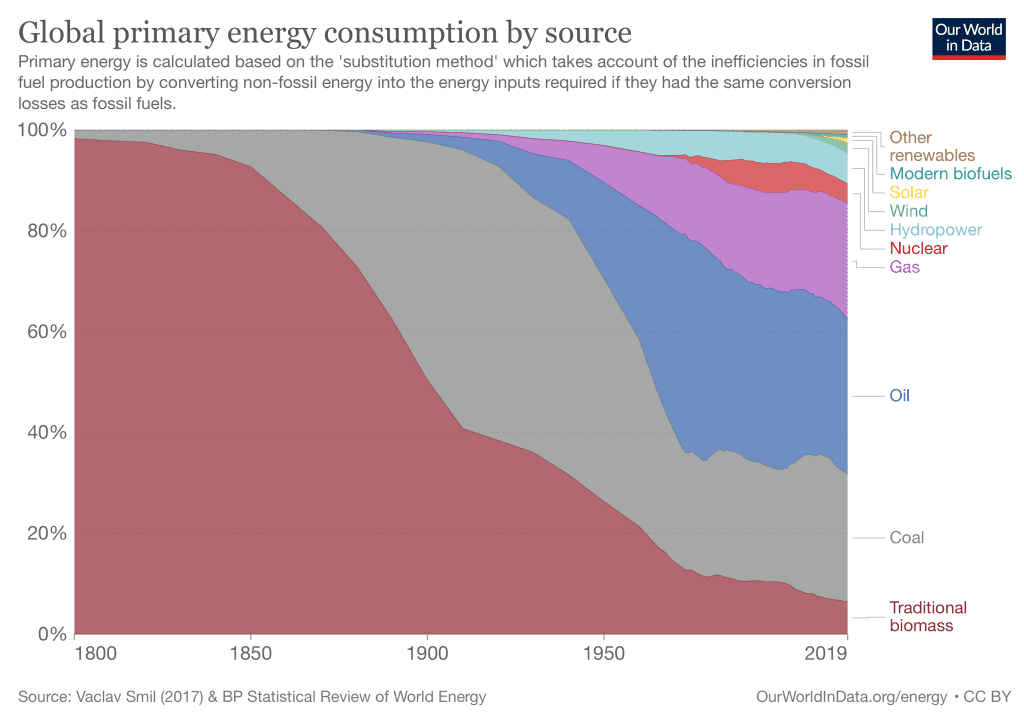
Interpreting the Graph
This graph shows the percentage of the world’s energy supplied by each energy source. You can see that over time (from left to right) the most used energy sources have changed. Some sources that used to be used a lot are nearly phased out and others that weren’t discovered until the late 1900s are starting to supply more of the world’s energy.
2. WHO HAS ACCESS TO ELECTRICITY?
Energy is important, but specifically, electricity is vital for day-to-day life if you want to live with the benefits of the modern world.
Watch the video on the right about life without electricity. This video speaks about how your great, great, grandmother will have grown up in a time when there wasn’t yet electricity. She won’t have had a fridge to store food in, a vacuum cleaner to clear up crumbs, a dishwasher to do the dishes, a heater to warm water or a car to get around.
Unfortunately for many people, particularly those in developing countries, your great-grandmother’s life is still a reality. Thirteen per cent of the world (940 million people) do not have access to electricity. Like your great-grandmother, these people don’t have lights to stay safe and productive at night, mobile phones to communicate with people for work and leisure, certain methods of transport to get around, access to life-saving medical equipment and the list goes on.
The difference between their lives and your great-grandmother’s is that they now live in a time where 87% of the world does have electricity. So, while other countries can have people working and making products all night long with the lights on or use phones to communicate and share research and knowledge with people all over the world or use computers and the internet to find and apply for a job, countries where most people don’t have electricity, cannot. This makes it very difficult for their economies to grow, contributing to a vicious cycle of poverty and inequality between countries.
Access to electricity in developing countries is less widespread than in developed countries because they do not have the money to build the infrastructure required and to keep it in working order. This means that there often simply isn’t enough electricity to go around or they don’t connect people’s houses to the electricity grid or power outages happen because things don’t get repaired as they should.
Electricity access around the world
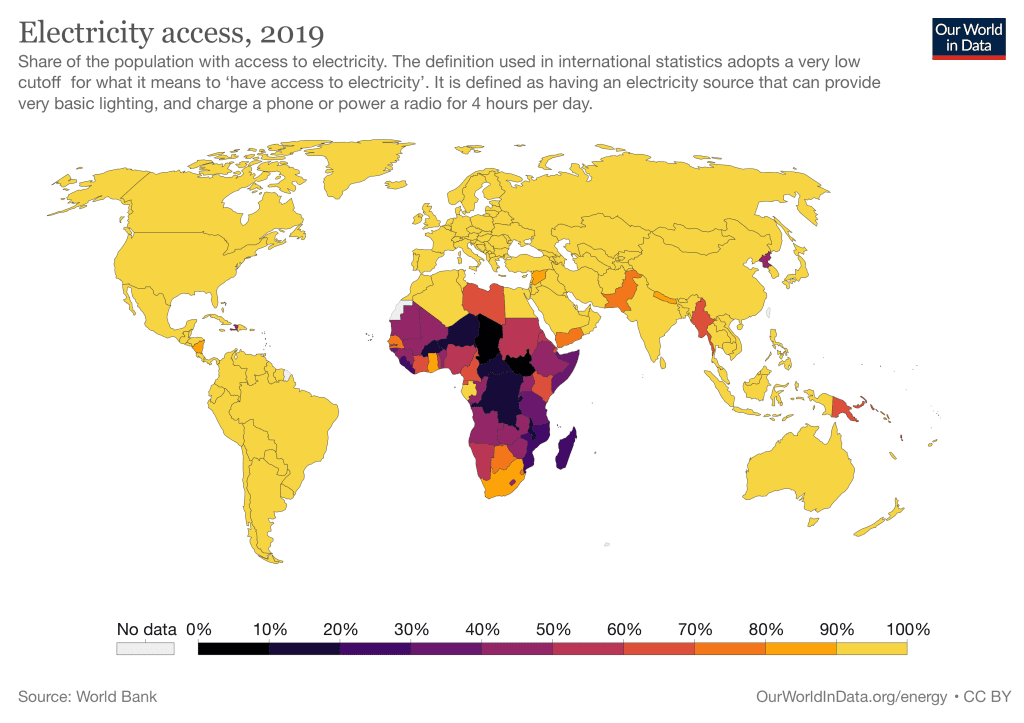
Interpreting the Map
This map shows the percentage of people in each country who have access to electricity. The key at the bottom can help you interpret the map. In the countries in yellow, 90-100% of the population, so pretty much everyone, has access to electricity. In the countries in darker colours, very few people have access to electricity. In the countries in black, less than 10% of the population has access to electricity.
3. Energy Consumption And Wastage Around the World
So, now you know that producing energy in the way we currently produce it isn’t too great for the environment and also that lots of people don’t have access to energy, specifically electricity.
How would you feel if you found out that we actually produce a lot more electricity than we use, meaning that the planet is being damaged for electricity that isn’t even reaching people? Unfortunately, the way that we currently transport and use electricity means that a lot of it is lost or wasted, rather than being used. For example, people leave their lights on when they’re not using them and leave their appliances – like their TVs plugged in. These appliances act as ‘energy vampires’, using electrical energy even when they’re not switched on.
Take a Guess
The Solution
There is progress. Between 1990 and 2017, the number of people with access to electricity went up by 2.96 billion. In that time, the use of renewables and clean energy has hugely increased too. For example, hydropower production went up 200 times. There are also wonderful advances in solar energy that have made it more affordable and efficient.
Still, not everyone has access to clean and affordable energy and energy use continues to harm the environment.
So, everyone needs to:
1. Ensure That Clean and Renewable Energies Are Used
Make sure that energy is sourced from clean and renewable sources by:
Offering financial benefits
Offering financial benefits can encourage people to invest in clean and renewable energies.
For example, offering something called net metering. This is where people and businesses install solar panels on their buildings and then connect their solar panels to the electricity grid. Then they can sell electricity to the grid when they have too much or buy electricity off the grid when they have too little.
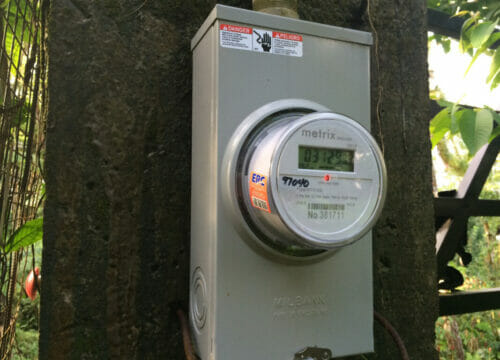
Government rules and guidelines
Government rules and guidelines can force people to use electricity more responsibly.
For example, a type of rule used in many countries around the world is called carbon pricing. Carbon pricing estimates the costs of greenhouse gas emissions and makes people that are causing the emissions pay a price.
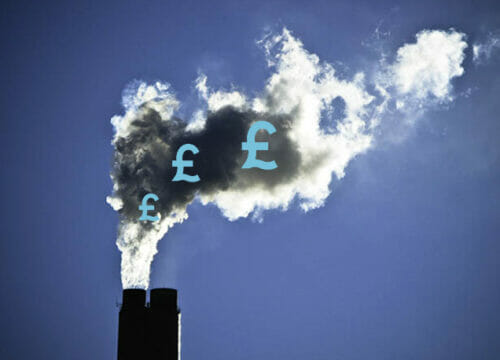
Education
Education about the benefits of clean energy can help people make good decisions about their energy use.
For example, many people are against wind energy because they feel as though it ruins the beauty of the natural landscape near them. But, if they are informed about the environmental benefits and understand the consequences of not using the wind energy, they are likely to change their mind.
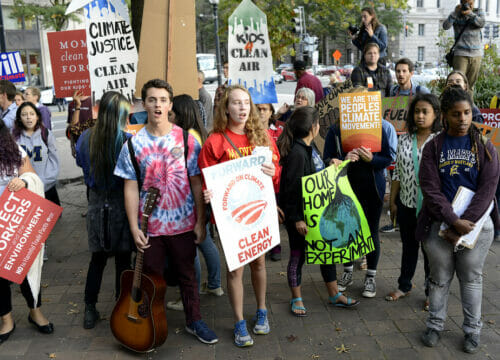
2. Improve Access
Improve access to reliable and modern energy by:
Promoting the sharing of knowledge between countries
When everybody shares their knowledge, things can change faster. Specifically, developed countries could share their research findings and technology with developing countries so that they can also benefit from what the more well-off countries know.
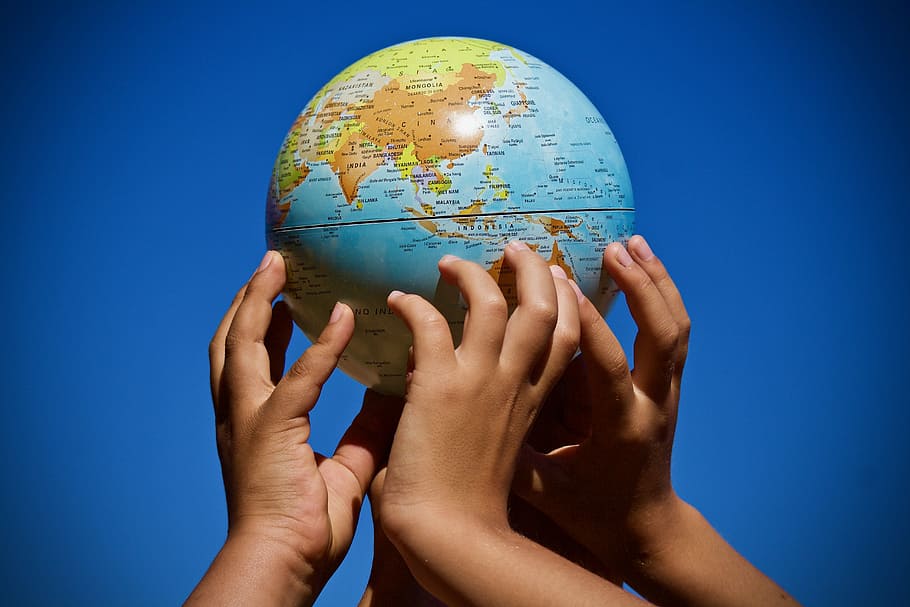
3. Improve Energy Efficiency
Enhance energy efficiency by:
Switching to energy-efficient appliances
Switching to things that use energy in the best way possible can help minimise our energy use. This includes using energy-efficient lighting, vehicles and industrial equipment and adapting buildings to use energy better.
For example, buildings can have insulation installed in their roofs and double glaze windows so that less heat escapes the building and less heating is wasted.
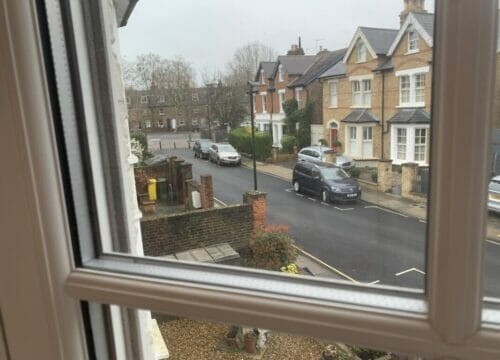
Funding
Putting more money into finding better solutions can ensure we are using the cleanest and most affordable energy possible. The UN suggests that the world needs to triple the amount of money that is spent every year to discover new things that will be good for the environment in the long term and will waste less energy.
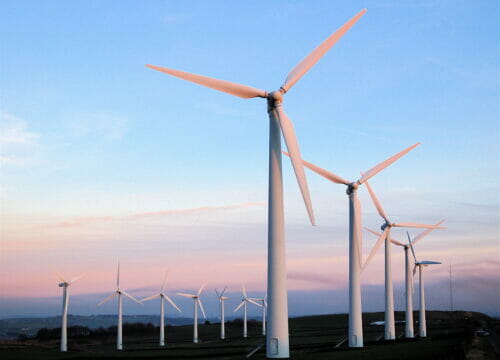
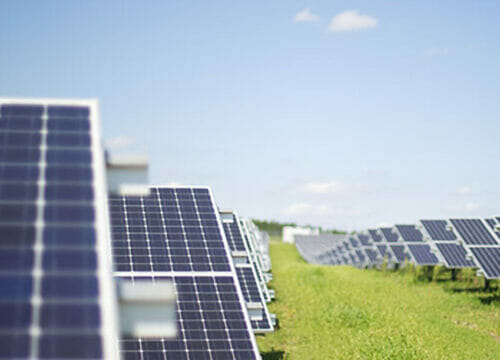
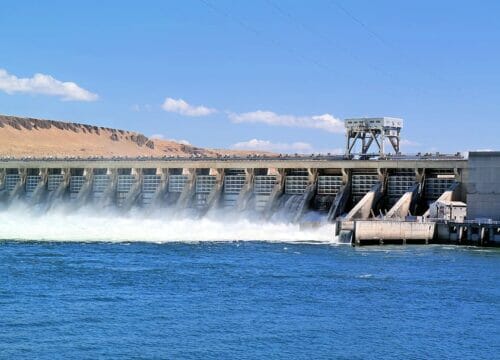
Incentives to Change
People can be incentivised to change. The new and more planet-friendly ways of doing things can be made easier and cheaper.
For example, the UK Government offers subsidies for low-income and vulnerable households to upgrade their boilers to energy-efficient boilers and insulate their homes. However, many people believe that subsidies aren’t enough and that the government needs to agree to fully fund the insulation of low-income homes.
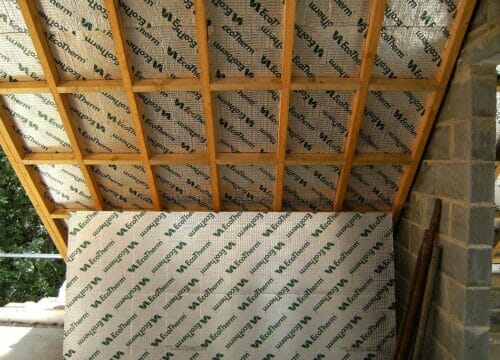
Take action
Now that you understand a bit more about Affordable and Clean Energy, it’s time to make a difference. If you want to do something practical to help, the power is in your hands. Take a look at some ways you can take action right now
Fundraise
You can make a massive difference in somebody’s life by doing fundraising for charities that work to promote Affordable and Clean Energy. Some of the things the money you raise can achieve:
- £1 plants a tree to absorb carbon dioxide.
- £4 pays for a solar light to be used in a family home.
- £50 pays for the wiring and fittings needed for a house to receive electricity for the first time from a community-owned and -managed solar microgrid.

- Be conscious of energy consumption and lead by example. Turn off appliances, lights and anything running on electrical power when not in use.
- Replace old appliances with energy-efficient models and light bulbs if you can.
- Write a letter to your headteacher asking them to upgrade old appliances to energy-efficient models and to change light bulbs to LEDs.
- Start an eco-club at your school. In the club you could discuss how your school can limit their energy consumption. For example by nominating someone in each class as the ‘lights monitor’. They will be in charge of making sure the lights are turned off whenever you leave the classroom – to go to break time, lunch, or at the end of the day!
- Talk to your parents or guardians about how to make your home more energy-efficient. For example, tell them about energy-saving schemes in the UK such as subsidies for roof insulation. Remind them that making your home more energy-efficient will save them money on energy bills in the future!
- Talk to your parents or guardians and encourage them to switch to a green energy supplier.
- Make a poster to tell people how they can reduce their energy consumption. For example, they can: turn off appliances, lights and anything running on electrical power when not in use. Remind them that not only will this be better for the environment, reducing how quickly global warming happens, it will also save them a lot of money in the long term. Quote some facts and figures from this page to make your case stronger!
- Make a poster to guide teachers at your school to minimise their use of electricity in lessons. Suggest:
- 1) Going ‘dark’ (turn off lights when possible),
- 2) Going ‘old school’ (use a whiteboard instead of the projector),
- 3) Go ‘incommunicado’ (turn off computers and laptops whilst teaching).
- Organise a school power out to raise awareness about affordable and clean energy. Switch off all electrical appliances and devices, as well as lights for an hour and talk about why we need energy and the different types of energy and their impact on people and the planet.
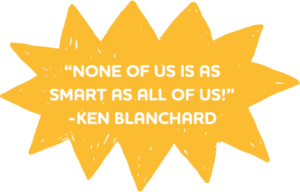
If you have any other ideas of SuperKind things people can do to help achieve clean and affordable energy, we would love to hear from you here.
Support These Amazing Charities
SolarAid
Our mission is to light up every home, school and clinic in Africa by 2030, using safe, clean, solar power. Together, we are making light work.
Renewable World
We envision a world where renewable energy is readily accessible to all, helping to end extreme poverty and mitigate climate change.
Cool Earth
Cool Earth works with rainforest communities to stop deforestation and its impact on climate change.
Clean Air Task Force
CATF is on a mission to push the change in technologies and policies needed to get to a zero-emissions, high-energy planet at an affordable cost.
Campaign for Better Transport
Campaign for Better Transport is the leading national charity making the case for public transport’s vital role in protecting the environment, connecting communities and supporting the economy.
Change-Makers
Here are some amazing young people who cared about Affordable and Clean Energy and took action to make change happen. These change makers were all passionate about the same cause but used their unique skills to make change happen in different ways.
Everyone can help make a difference. Consider what your unique superpower might be. Are you someone with a strong voice who likes to spread awareness by talking to everyone you meet? Or do you prefer a behind the scenes approach – making sure that donations are collected to take to those in need?
Vinisha Umashankar
Designing a solar powered ironing cart to reduce charcoal burning in India since she was 12 years old.
Lazar Duković
Designing technology to supply electricity and water without emitting greenhouse gases since he was 15 years old.







